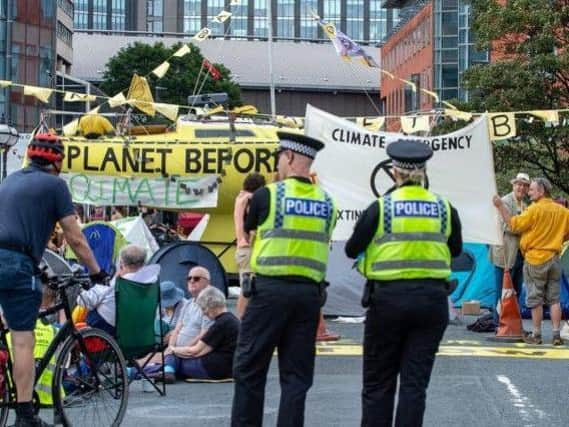Extinction Rebellion and HS2 protests reveal police need to strike better balance between activists and residents


The Home Secretary commissioned Her Majesty's Inspectorate of Constabulary and Fire and Rescue Services (HMICFRS) to conduct an inspection into how effectively the police manage protests in September 2020.
This followed several protests by groups including Extinction Rebellion and Black Lives Matter, as well as long-running demonstrations, including the construction of the high-speed rail line HS2.
Advertisement
Hide AdAdvertisement
Hide AdInspectors visited 10 forces across the country, including West Yorkshire Police and also had contributions from South Yorkshire Police to assess the extent to which police have been using their existing powers effectively and what steps the Government could take to ensure that the police have the right powers to respond to protests
HMICFRS found police forces are usually good at planning for protests, work effectively with other organisations and also make good use of equipment and technology, such as drones.
However, inspectors found that when police forces do not accurately assess the level of disruption caused, or likely to be caused, by a protest, the balance may tip too readily in favour of protesters.
After speaking to police forces, protest groups, businesses and the wider public, the inspectorate said a modest reset of the scales is needed.
Advertisement
Hide AdAdvertisement
Hide AdHer Majesty’s Inspector of Constabulary Matt Parr said: "The right to gather and express our views is fundamental to our democracy. But this is not an absolute right. The police need to strike the correct balance between the rights of protesters and the rights of others, such as local residents and businesses.
"We concluded that, with some qualifications, changes to the law would improve police effectiveness, and that the legislation could be framed in a way that is compatible with human rights.
"There will remain a considerable public interest in ensuring that a fair balance is struck. We have made recommendations and identified areas for improvement which are designed to help the police get the balance right."
HMICFRS was asked by the Home Office to comment on proposed changes to legislation. The watchdog concluded that, with some qualifications, changes to the law – such as widening the conditions police can impose on static protests – would improve the effectiveness of protest policing, as long as they are applied proportionately and in line with human rights law.
Advertisement
Hide AdAdvertisement
Hide AdAs part of its inspection, HMICFRS found more than two thirds of people thought it was unacceptable for protests to involve violence or serious disruption to residents and businesses.
HMICFRS has recommended that the police service makes several changes to help get the balance of policing protests right, including:
Ensuring that police forces consider the levels of disruption or disorder above which enforcement action will be considered;
Improving the way that police assess the impact of protests, to help them understand fully the impact on local residents, visitors to the area, businesses, and the critical infrastructure;
Advertisement
Hide AdAdvertisement
Hide AdImproving the quality of police intelligence on protests, particularly intelligence about those who seek to bring about political or social change in a way that involves unlawful behaviour or criminality;
Supporting forces to use live facial recognition technology in a way that improves police efficiency and effectiveness, while addressing public concerns about the use of such technology; and
Equipping police commanders with up to date, accessible guidance and a greater understanding of human rights law.